Downtown Tokyo In Photos – Who Needs Imagination…
My first ‘weekend’ off! On Thursday I went to Hama Rikyu Garden in the South East corner of Tokyo. I fancied a day on my own, trying to speak no English and instead use as much broken Japanese as possible. The park was absolutely beautiful, and every turned corner was equally fascinating. One of the most fascinating things was how many skyscrapers dominated the background, yet how serene the garden was.

In the middle of the largest lake (the only remaining seawater pond within Tokyo) is a teahouse, built in 1704 and used by the Imperial nobles. The entire bridge is made from Japanese cedar. The first picture is my favourite of Tokyo so far.



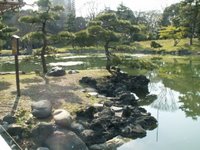


Although I climbed these steps which suggested I could see Mt Fuji, I realised that each corner of the park was a mound named after the famous mountains. Silly me.

I boarded a boat from inside the Garden (how very touristy of me, I know) on the Sumida River. It was a forty minute relaxing, and pleasantly breezy, cruise North towards Asakusa.

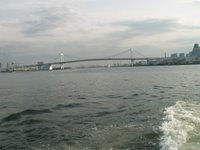
Opposite the embarkation point, was Philippe Starck’s ‘Flamme d’Or’. Actually, it looks a little like a golden dog poo, but maybe that’s just me not appreciating good architecture. I’ll give it credit, it’s huge. As wide as the building behind it, if that helps to give it scale.

The map below shows Hama Rikyu bottom left (the tea house, on the lake). Past all the bridges somewhere in the middle (the red temple and pagoda) is Asakusa. Just so you know, the Eiffel Tower-like building near Hama Rikyu is Tokyo Tower, the green and white fish thing next to Rainbow Bridge which is connected near to Hama Rikyu is the fish market, and near the bottom right is Tokyo Disneyland.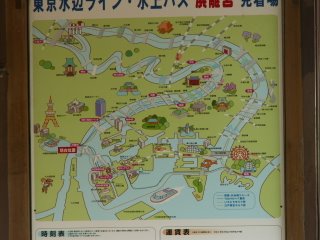
In Asakusa, I headed towards the shrines and temples. The first thing of interest I came to was Kaminarimon. Not a pokemon, but the ‘thunder gate’; the thunder god is on the right and the wind god on the left.


Nakamise-dori took me past a pagoda and towards Asakusa Kannon Temple; Tokyo’s oldest, founded in 628 when two brothers found a golden image of Kannon, the deity of compassion, in their fishing nets. Strangely, I didn't take any photos of the actual temple!? It's a good excuse to go back. The hand washing feature was beautiful, however.

Behind the temple is a 17th Century Shinto shrine built in honour of the brothers. Strangely, there are swastika signs on many of the religious buildings; on maps, temples/churches are marked my swastikas. I guess it is true that the Nazis’ adopted this sign for their party. However, if you look closely, the image is reversed so that is a good indication that they take very different symbolic meanings now.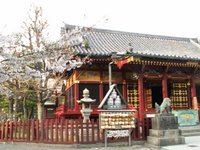
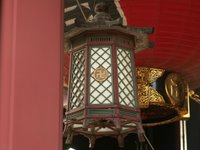
I wandered around a bit more before heading towards Sumida Park, which was heavily decorated with bright pink lanterns and the last of the cherry blossom.



The Park led me back to Asakusa Port/Station and I took the train home. The time alone was nice, but using no English was hard.



2 comments:
What absolutely beautiful photos Philip. I definitely think that this must be the best time of year to visit. We'll start making enquiries now about flights from Paris to Tokyo!!
Love Mum
all looks very amazing, you are certainly getting around.
What do your colleagues do on their time off?
What sort of cooking do you do?
What do you eat?
The swastika is a very common symbol found in many cultures. It became demonised by the Nazi party.
There are many claims who first used it and which way round it goes, and how many "legs" some had 5. The Romans used it extensively and also found in ancient S America.
Post a Comment